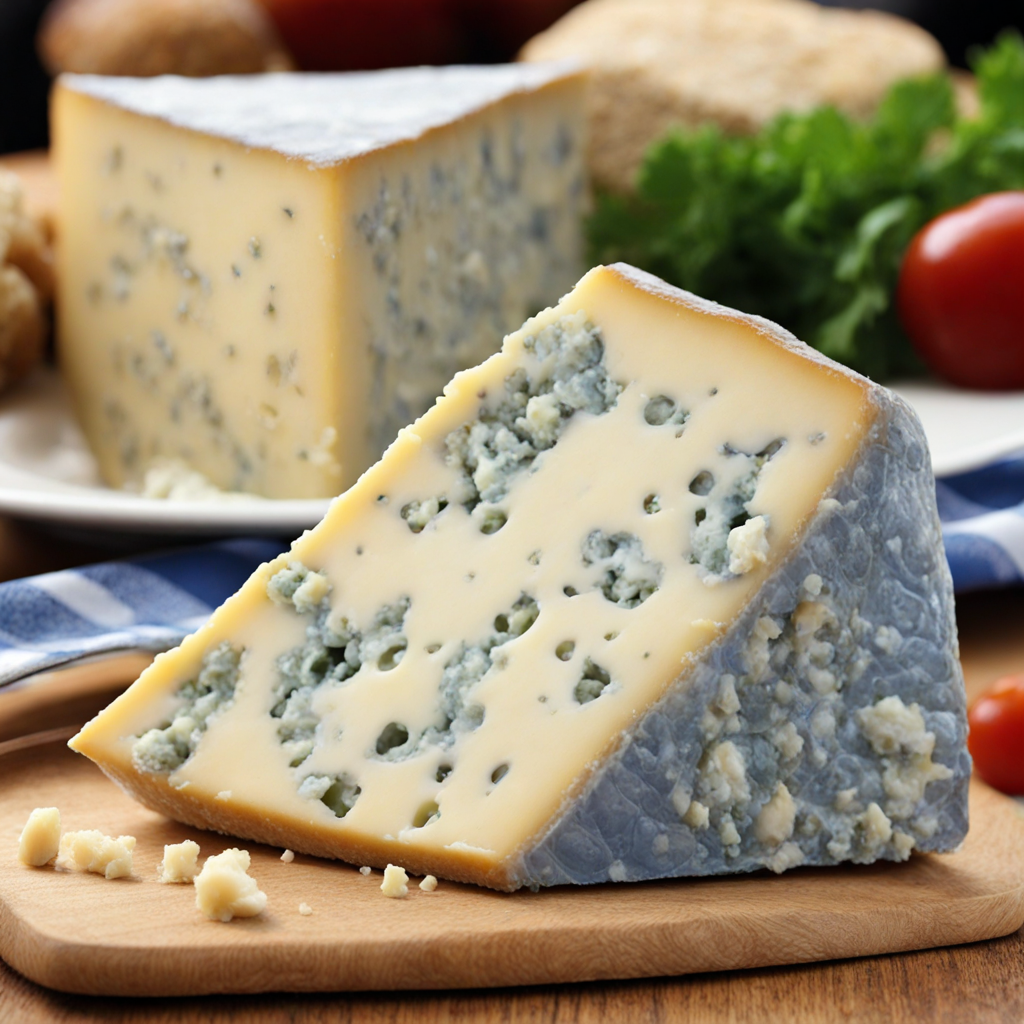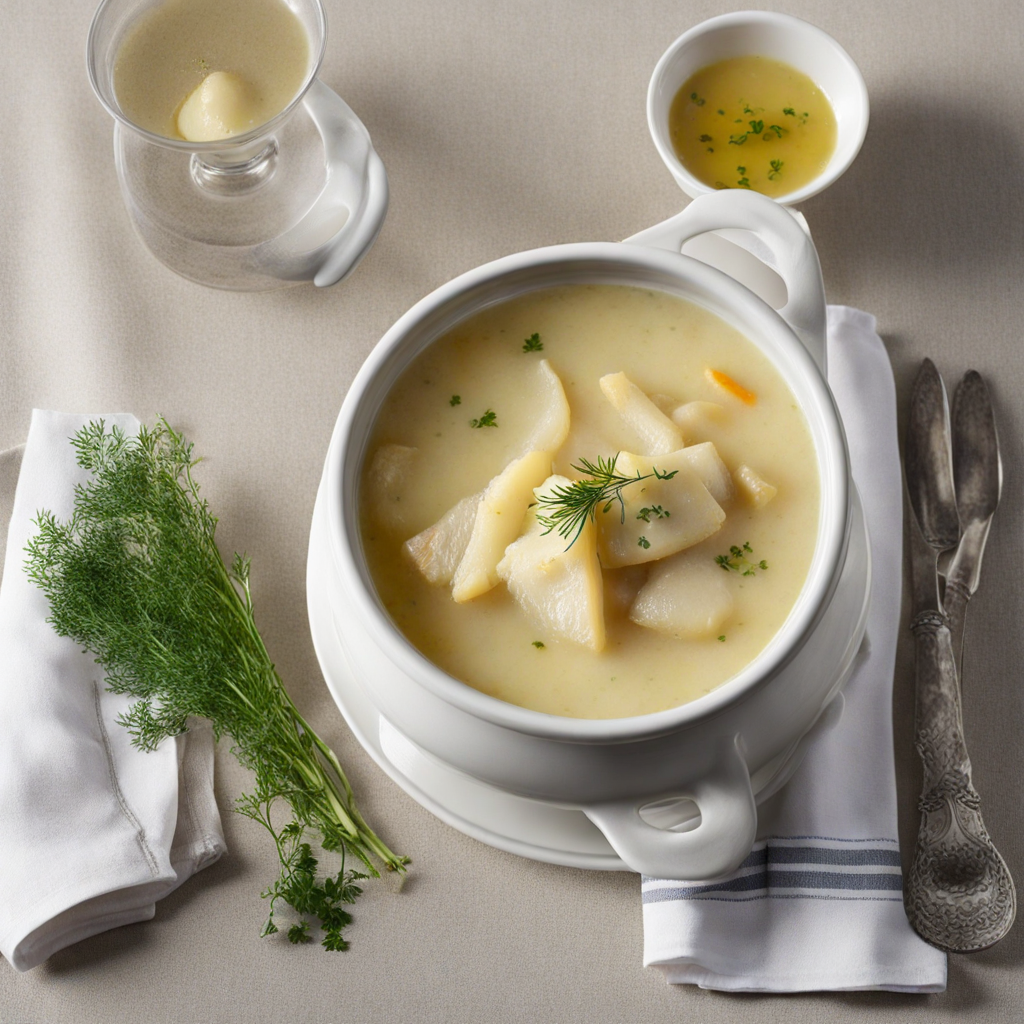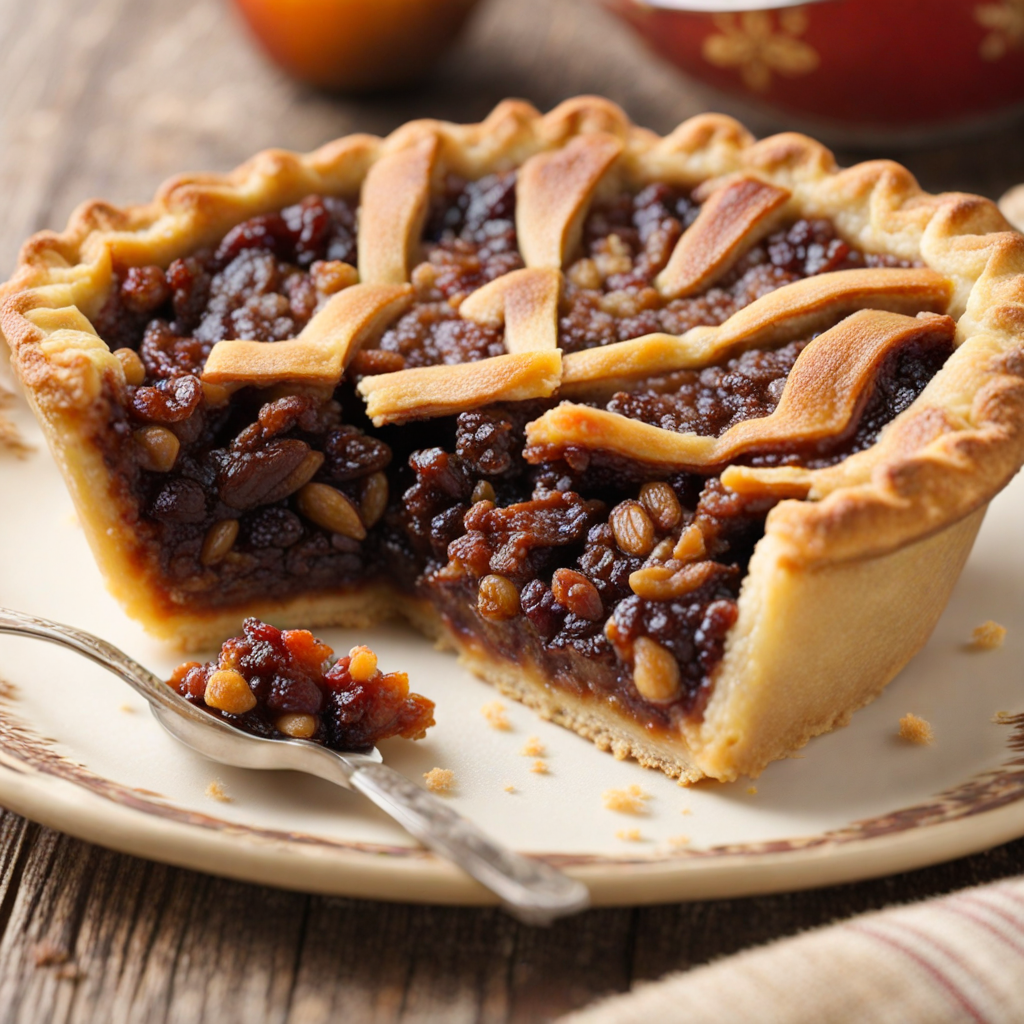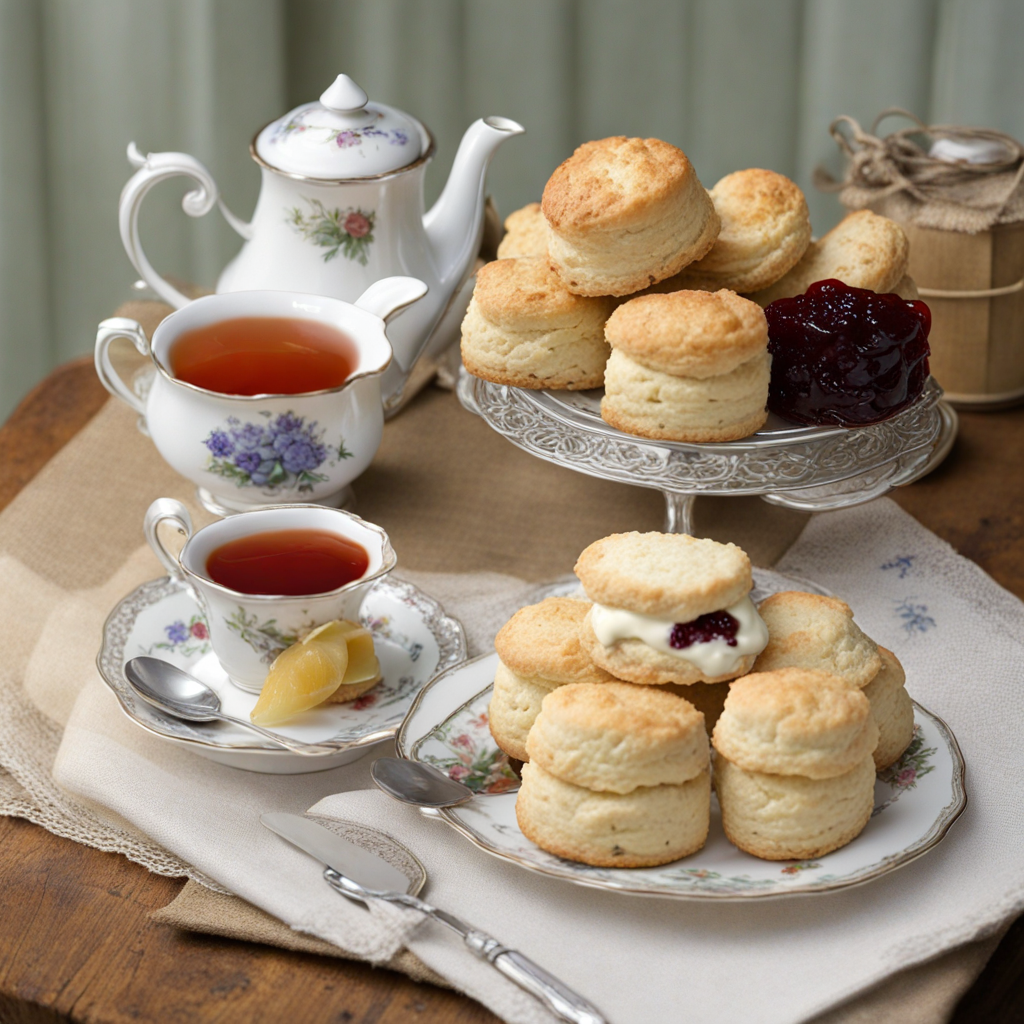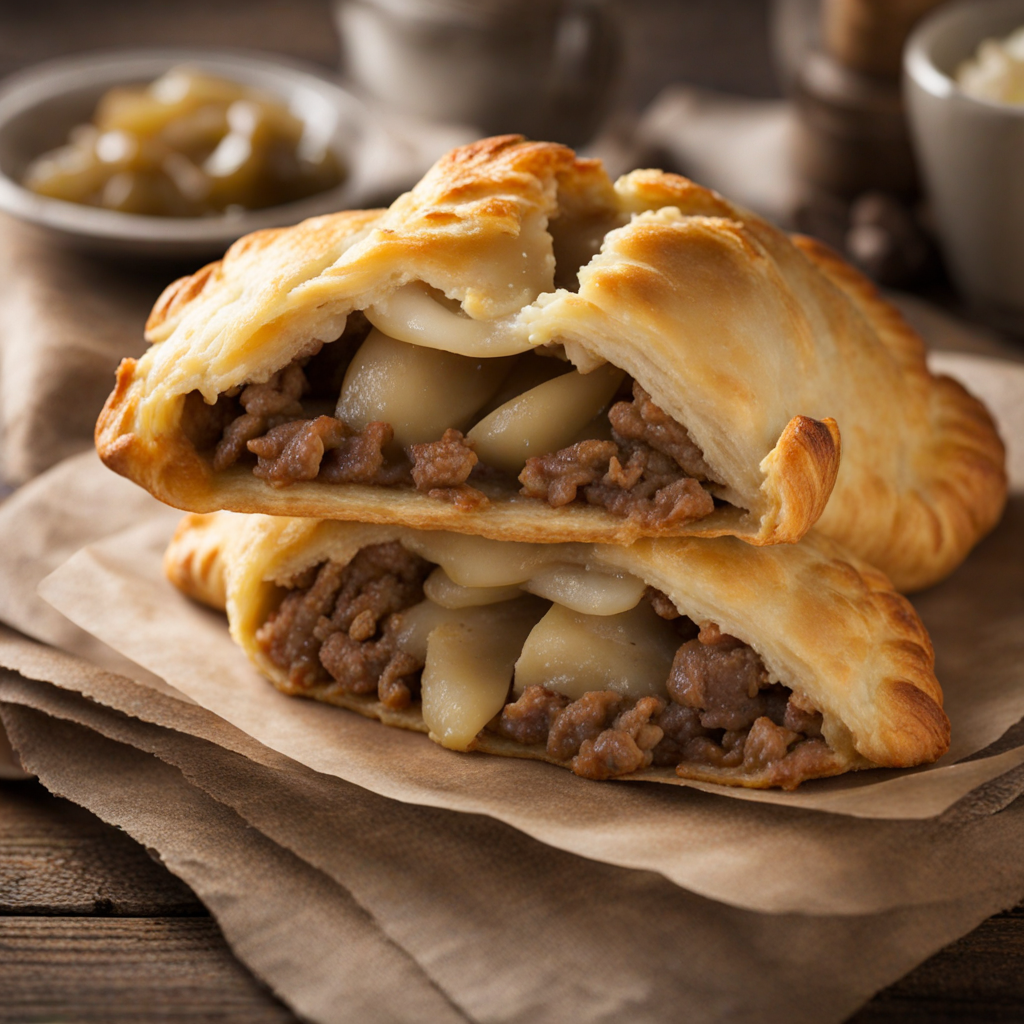Stilton Cheese
Stilton cheese, often referred to as the "King of English Cheeses," is a unique blue cheese that hails from the picturesque countryside of the United Kingdom. Known for its rich, creamy texture and robust flavor, Stilton is made from cow's milk and is characterized by its striking blue veins, which come from the introduction of Penicillium mold during the aging process. This cheese is typically produced in two varieties: Stilton blue, with its tangy, sharp flavor, and the somewhat milder white Stilton, which is less pungent and often enjoyed with fruit or as a dessert cheese. The taste of Stilton is complex, with a delightful balance of savory and sweet notes. The blue veins impart a distinct earthiness that can be both bold and creamy, making it a perfect pairing for a range of foods and beverages. When enjoyed on its own, Stilton can evoke a nutty and slightly spicy flavor profile, while its creaminess coats the palate, leaving a lingering richness. It also pairs beautifully with sweet accompaniments such as honey, figs, or dried fruits, enhancing its flavor and providing a delightful contrast. Stilton cheese is often used in various culinary applications, from being crumbled over salads to enriching soups and sauces. Its versatility makes it a favorite among chefs and home cooks alike. When served on a cheese board, Stilton can be complemented with crusty bread, crackers, or a selection of fruits and nuts, creating a sensory experience that highlights its distinctive taste. This exceptional cheese not only represents a significant part of British cheese-making tradition but also invites food enthusiasts to explore its deep flavors and delightful pairings.
How It Became This Dish
The History of Stilton Cheese: A British Culinary Icon Stilton cheese, often revered as one of the finest blue cheeses in the world, carries with it not just a unique flavor but also a rich tapestry of history, culture, and tradition that traces back to the 18th century in England. The cheese, named after the village of Stilton in Cambridgeshire, might not have originated there, but it has become inextricably linked to the area due to its historical production and the role it played in the culinary landscape of Britain. #### Origins in the 18th Century The earliest references to Stilton cheese date back to the early 1700s, when it was allegedly first produced by a local innkeeper named Cooper Thornhill at the Bell Inn in Stilton. This establishment became a popular stopping point for travelers along the Great North Road, and the cheese quickly gained a reputation for its distinctive flavor and creamy texture. By the mid-18th century, Stilton cheese was being produced in greater quantities, and its popularity began to spread beyond the small village. Contrary to popular belief, Stilton cheese was not originally made in Stilton. The production of the cheese was mainly centered around Derbyshire, Leicestershire, and Nottinghamshire. It is this geographical association that eventually led to the development of the Protected Designation of Origin (PDO) status for Stilton cheese in the late 20th century, ensuring that only cheese made in these designated counties can legally be called “Stilton.” #### Cultural Significance Stilton cheese quickly became a symbol of British culinary excellence. Its rich, creamy texture and sharp, tangy flavor made it a beloved choice among the aristocracy and the burgeoning middle class during the 18th and 19th centuries. It was often served at banquets and lavish dinners, showcasing the wealth and sophistication of the host. By the 19th century, Stilton had become a staple in the British diet, often enjoyed with port wine—a pairing that remains popular today. Moreover, Stilton cheese held a unique cultural significance during the Victorian era. As the British Empire expanded, so did the culinary influences and tastes of the ruling class. Stilton was not just a food item; it became a symbol of British pride and identity. The cheese was included in cookbooks and gastronomic literature, further cementing its status in the canon of British cuisine. #### Development Over Time The 19th century saw the industrialization of cheese production, which impacted Stilton as well. The introduction of mechanical processes allowed for greater consistency and efficiency in cheese-making, leading to an increase in production capacity. However, this also raised concerns over quality and authenticity, as mass-produced cheeses began to flood the market. In response to these developments, cheesemakers in the designated regions began to emphasize traditional methods and artisanal techniques, focusing on the unique characteristics that defined authentic Stilton. This push for quality over quantity culminated in the establishment of the Stilton Cheesemakers’ Association in 1969, which played a crucial role in promoting and maintaining the standards of Stilton cheese production. The PDO status, granted in 1996, was a turning point for Stilton cheese. It safeguarded the name and production methods, ensuring that only cheese made from milk sourced in the designated counties of Derbyshire, Leicestershire, and Nottinghamshire could be sold as Stilton. This legal protection not only preserved the cultural heritage of the cheese but also supported local economies and traditional cheesemaking practices. #### Stilton in Modern Times In the modern culinary landscape, Stilton cheese continues to thrive. It is celebrated not only in Britain but globally, often used in gourmet dishes, salads, and cheese boards. The cheese’s versatility allows it to pair with a variety of foods, from fruits like pears and apples to nuts and charcuterie. Its rich, complex flavor profile makes it a favored ingredient among chefs and home cooks alike. Events celebrating Stilton cheese, such as the annual Stilton Cheese Festival held in the village of Stilton, further reinforce its cultural significance. These festivals showcase local artisans, cheesemakers, and culinary talent, offering tastings, cooking demonstrations, and educational opportunities about the history and production of Stilton. Such events help to keep the traditions alive while introducing new generations to the joys of this iconic cheese. #### Conclusion Stilton cheese is more than just a delightful culinary creation; it is a symbol of British heritage and a testament to the evolution of food culture over centuries. From its humble origins in a small village to its status as a global gastronomic icon, Stilton embodies the rich history of British cheesemaking and the dedication of artisans who continue to uphold traditional practices. As it finds its place in modern kitchens and on fine dining menus, Stilton remains a beloved cheese that connects past and present, tradition and innovation, ensuring its place in the hearts (and stomachs) of food lovers everywhere.
You may like
Discover local flavors from United Kingdom


